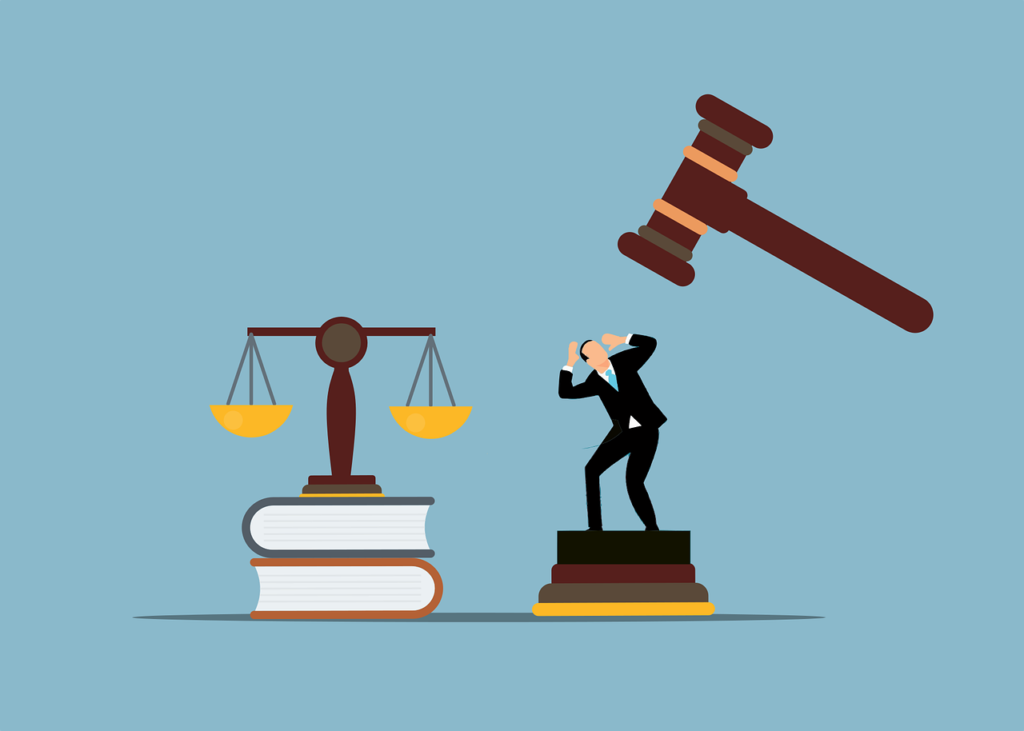The court and prison systems serve as critical components of the justice framework within society. Understanding how these systems operate is essential for grasping the broader implications of law enforcement and rehabilitation efforts. In this document, we will explore key facts about the court and prison systems, demystifying the processes involved and the roles they play in maintaining order and ensuring justice. By breaking down complex terminology and procedures, this guide aims to provide clarity on topics ranging from legal proceedings to incarceration practices, ultimately enhancing awareness and informed discussion surrounding these vital institutions.
1. The Court System Explained
The court system is designed to adjudicate disputes, enforce laws, and uphold justice in society. Courts are typically structured in a hierarchy that includes lower courts, appellate courts, and a supreme court. Each level has distinct responsibilities and powers, influencing how cases are managed and resolved. Understanding this structure is crucial to navigating the legal landscape.
Lower courts, often referred to as trial courts, are where cases begin. They hear the initial arguments, gather evidence, and deliver verdicts. These courts handle a variety of cases, including criminal, civil, and family law disputes. The proceedings in these courts are essential for ensuring a fair trial and justice for all parties involved.
Appellate courts play a vital role in the court system by reviewing decisions made by lower courts. Their function is to determine if legal errors have occurred that might affect the outcome of a case, providing a check on the lower court’s authority. Supreme courts, often the highest judicial authority in a jurisdiction, usually handle the most significant cases and set important legal precedents. An overview of Federal Bureau of Prisons can provide further insight into how the federal court system operates. It is important to note that court procedures and structures may vary depending on the country or state in which they are located.
2. Understanding Legal Proceedings
Legal proceedings are the steps involved in resolving a case through the court system. They generally begin with the filing of a complaint or charges against a defendant. Once initiated, the parties involved engage in a process that includes discovery, where both sides gather evidence and exchange information. This phase is critical in preparing for the trial.
The trial itself is the formal process where evidence is presented, witnesses are called, and arguments are made. It can include jury trials, where a group of peers decides on the case, or bench trials, where a judge determines the outcome. The trial process can be complex, requiring knowledge of legal procedures, rules of evidence, and various tactical decisions.
After the trial, the court provides a verdict or ruling, which concludes the legal process at that stage. However, depending on the outcome, parties may seek to appeal the decision, thus extending the legal proceedings to higher courts. Understanding each of these stages is crucial for comprehending how justice is administered.
3. The Role of Judges and Juries
Judges and juries serve as the backbone of the court system, playing integral roles in the administration of justice. Judges are responsible for overseeing court proceedings, ensuring that laws are upheld, and maintaining order in the courtroom. Their rulings can shape the course of a case and ensure that legal standards are met throughout the process.
Jurors, on the other hand, are citizens selected to assess the evidence presented during a trial and deliver a verdict based on that evidence. They are expected to remain impartial and draw conclusions based solely on the information provided within the courtroom. The jury system embodies the principle of peers judging peers, reflecting the democratic nature of the legal process.
The collaboration between judges and juries is essential for a fair trial, as judges provide legal context while juries bring diverse perspectives. This partnership is designed to protect the rights of defendants and maintain public confidence in the judicial system. Understanding their roles helps clarify the dynamics of court proceedings.
4. Sentencing and Punishment
Sentencing is a crucial phase in the criminal justice process, determining the consequences faced by a convicted individual. Judges consider various factors, including the severity of the crime, the defendant’s history, and the impact on victims when deciding on a sentence. This process underscores the importance of balancing justice with rehabilitation.
Different types of sentences can be imposed, ranging from fines and probation to imprisonment and, in some jurisdictions, capital punishment. The nature of the sentence often reflects societal values around crime and punishment, emphasizing deterrence, retribution, and rehabilitation. Understanding these types helps in comprehending the broader implications of the justice system.
Sentencing also involves considerations for parole and rehabilitation programs, which aim to reintegrate individuals into society. The effectiveness of these programs plays a vital role in reducing recidivism rates and promoting public safety. A nuanced approach to sentencing recognizes the complexities of human behavior and the potential for change.
5. Incarceration Practices and Policies
Incarceration serves as a significant element within the criminal justice system, with policies designed to manage individuals who have been convicted of crimes. The impact of incarceration extends beyond the prison walls, influencing families, communities, and broader societal structures. Understanding these practices is essential for grasping the implications of the justice system.
The conditions within correctional facilities can vary significantly, affecting the rehabilitation process. An emphasis on humane treatment and education is vital for fostering success post-release. Many prisons have implemented programs aimed at providing inmates with skills and education, thereby facilitating their reintegration into society.
Incarceration policies also reflect ongoing debates surrounding justice, equity, and public safety. Discussions about mandatory sentencing, overcrowding, and the impact on marginalized communities have prompted reforms in various jurisdictions. Exploring these practices reveals the complexities inherent in balancing punishment with the potential for rehabilitation.
6. The Impact of the Justice System on Society
The justice system not only serves to enforce laws but also plays a crucial role in shaping societal norms and values. Public perceptions of justice, fairness, and accountability are influenced by the court and prison systems. Furthermore, these institutions directly affect individuals and communities, with lasting ramifications on various social issues.
Effectively ensuring justice involves recognizing the societal disparities that can affect outcomes within the justice system. Issues such as systemic bias, economic inequality, and access to legal representation can hinder fair treatment. Addressing these disparities is essential for fostering trust in the justice system and promoting a sense of fairness in society.
The relationship between law enforcement, the courts, and a diverse array of communities highlights the need for ongoing dialogue and reform. Engaging in discussions about best practices, community policing, and alternatives to incarceration can lead to more equitable and effective justice systems. Understanding these societal impacts underlines the importance of maintaining a just and equitable framework for all.
The court and prison systems are complex entities with a far-reaching impact on society. By breaking down key facts and concepts, this guide aims to provide a simplified understanding of these critical institutions. By enhancing awareness and promoting informed discussions, we can work towards creating a more just and equitable society for all.






